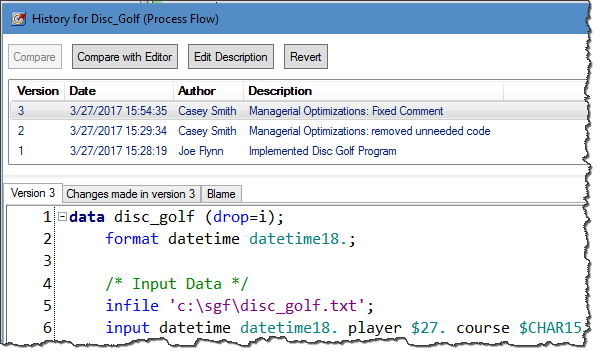
One way to use this call routine is:Īfter the call, the values of Var1 to Var10 will be in ascending order. The CALL SORTN routine sorts values WITHIN an observation. Tip #2: Using CALL SORTN to Save Lots of Coding Num_Yes = countc(cats(of Ques1-Ques5),'y','i') Then, use the COUNTC function to count the number of Y's or N's in the string, using the ignore case modifier. Use the CATS function to concatenate the 5 questions. If upcase(Ques) = 'Y' then Num_Yes + 1 Įlse if upcase(Ques) = 'N' then Num_No + 1 Make an array of the questions, initialize counters, count the Y's and N's in a DO loop As with all things SAS sends out in an "Experimental" mode, this ODS destination is likely to change before it is in a production mode. The outputs of this ODS destination are native format Excel workbooks for the version 2007 format and above. It was first shipped as an "Experimental" version with SAS Version 9.4 TS Level 1M1. This will be a process included within SAS ODS features that is not available for updating by users. But, there is something new on the horizon. This can be modified or a new version can be downloaded at any time.
#SAS UNIVERSITY EDITION HOW TO CHANGE TO NUMERIC CODE#
It is delivered as source code within the SASHELP.Tmplmst tagset files. ExcelXP is a Tagset that has many features. There is a new entry into the ODS arena of data transfer to Excel. Tip #3: The New ODS Destination EXCEL for writing Workbooks () This enables the user to convert formats on SET or DATA statements without extra SAS code. SET xls_data.'Sales_data$'n (SASDATEFMT=(Date_Shipped=TIME8. LIBNAME xls_data EXCEL 'C:\My_excel_files\sales_data.xlsx' Save data beyond row 7 as a *.csv file and load into Excel and save in an xls/xlsx file format. The data for the CSV file can be downloaded from my author page, it is in Chapter 4. The SAS base date is and Excel uses the Dublin Julian Day () as the base date. Each uses different base dates for their starting point. SAS and Excel systems recognize dates in their own way.

The SAS data set Sales_data1 was created with default options so that all of the date fields are formatted as SAS DATE9. Two DATA steps read the same Excel file producing different results. The first code line assigns a LIBNAME xls_data so we can read the data from the sales_data.xlsx file created from the CSV data file. The file has a product name, amount, and three dates with time segments attached.

SAS data set options provide these pre/post processing features as part of the SET or DATA input/output processing. 62) processes dates, which are one of the most common values that are hard to process. The following code from my book (Example 4.7, p. SAS can apply changes to data formatting when the data is being processed without the need to use SAS code to post process after input or pre-process before output. Tip #2: Using Data Set Options to Process Date and Time Values This enables the user to read part of an Excel spreadsheet.


 0 kommentar(er)
0 kommentar(er)
